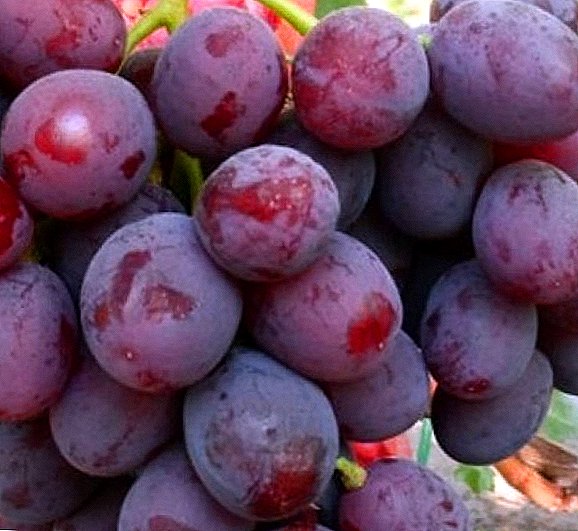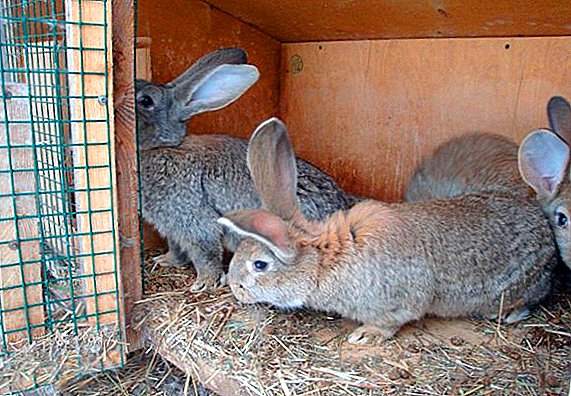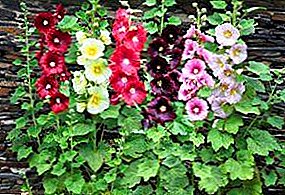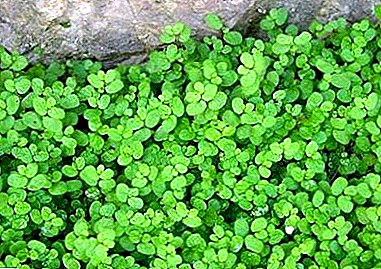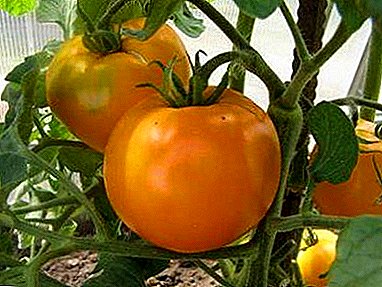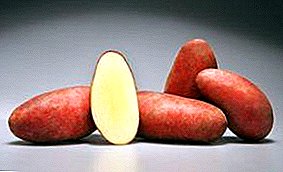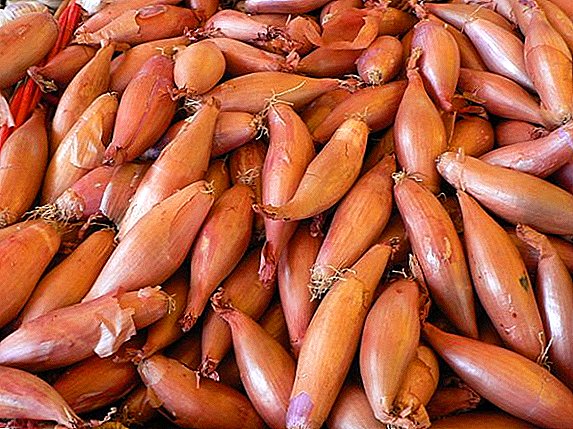 Shallot Many people love it because of its soft, tender and slightly sweet taste, which does not cause a bad smell after consumption. In addition, its greens and onions do not cause tears when sliced, in contrast to the more common onions.
Shallot Many people love it because of its soft, tender and slightly sweet taste, which does not cause a bad smell after consumption. In addition, its greens and onions do not cause tears when sliced, in contrast to the more common onions.
What is shallot
 So, shallots, what is it? Shallot - a perennial plant of the onion family, the onion of which is collected in lobules, which makes it look like garlic. Slices have an elongated shape and weigh no more than 50 grams. Shallots are grown mainly because of the greenery: delicate and thin feathers that have a mild taste without sharpness. The plant ripens quickly and is well stored, feathers grow coarse rather late, allowing you to harvest soft, fragrant greens. Asia is considered the birthplace of shallots, although today the plant is successfully cultivated in Europe, the Caucasus, as well as in Ukraine, Moldova and Russia.
So, shallots, what is it? Shallot - a perennial plant of the onion family, the onion of which is collected in lobules, which makes it look like garlic. Slices have an elongated shape and weigh no more than 50 grams. Shallots are grown mainly because of the greenery: delicate and thin feathers that have a mild taste without sharpness. The plant ripens quickly and is well stored, feathers grow coarse rather late, allowing you to harvest soft, fragrant greens. Asia is considered the birthplace of shallots, although today the plant is successfully cultivated in Europe, the Caucasus, as well as in Ukraine, Moldova and Russia.
Shallots: calories, composition and nutritional value
Shallot is considered a dietary product, it has small indicators of energy value. The caloric content of shallots per hundred grams of product: 17-19 Kcal in greens and 33-36 Kcal in the bulbs. However, despite the low calorie content, the nutritional value of onions is a real storehouse of useful elements. Only 100 grams of the product are present: water 79.8 g, proteins 2.5 g, carbohydrates 16.8 g, ash 0.8 g.
Moreover, the composition of onion shallot contains micro and macroelements: potassium and copper; manganese and calcium; iron and magnesium, selenium and sodium; as well as phosphorus. The plant is rich in essential oils, phytoncides, minerals and salts, carotenoids. Shallots contain vitamins of group B, vitamins A and C, vitamin PP.
Did you know? Onion crops are the most common product in the world. According to UN research, it is grown in more than 175 countries, and the crop onion exceeds even yields wheat, grown in the world.
The benefits of shallots for humans
 The beneficial properties of shallots allow it to be used in the treatment of many diseases. The product has dietary qualities, containing up to 4% of sugars. Calcium and phosphorus strengthen the bone tissues of the body with constant use. Ascorbic acid, which is also included in its composition, works to strengthen the immune system, and phytoncides help fight cold symptoms and are indispensable for vitamin deficiency, as they are substances that fight against pathogenic bacteria.
The beneficial properties of shallots allow it to be used in the treatment of many diseases. The product has dietary qualities, containing up to 4% of sugars. Calcium and phosphorus strengthen the bone tissues of the body with constant use. Ascorbic acid, which is also included in its composition, works to strengthen the immune system, and phytoncides help fight cold symptoms and are indispensable for vitamin deficiency, as they are substances that fight against pathogenic bacteria.
Trace elements and folic acid in the plant, makes it a very useful use of shallots for pregnant women. Calcium supports and helps to form the bone tissue of the fetus and along with folic acid prevents the development of pathologies during pregnancy. Also onions are an excellent preventive measure during influenza epidemics and are used as an anti-inflammatory agent.
How to use shallots in traditional medicine
 In folk medicine, shallots are used to treat diseases and improve the condition of blood vessels, as well as to normalize pressure. Onions are also useful in heart activity, as they are a source of sodium and potassium. The plant is useful for people with problems with metabolism, because it contributes to the secretion of gastric juice, which improves the functioning of the digestive system. In combination with fatty foods, onions work as a catalyst, helping to break down fats and improve their digestibility by the human body. Carotene, which is part of the plant improves the function of the eye muscles, the state of the lens and retina.
In folk medicine, shallots are used to treat diseases and improve the condition of blood vessels, as well as to normalize pressure. Onions are also useful in heart activity, as they are a source of sodium and potassium. The plant is useful for people with problems with metabolism, because it contributes to the secretion of gastric juice, which improves the functioning of the digestive system. In combination with fatty foods, onions work as a catalyst, helping to break down fats and improve their digestibility by the human body. Carotene, which is part of the plant improves the function of the eye muscles, the state of the lens and retina.
Important! Onions do not restore sight, but nevertheless, its regular use is good for the eyes.
Traditional medicine recommends the use of shallots for older people, because in its description are also fortifying properties. Being an antioxidant, onion removes toxins from the body and prevents cell aging.
In addition, it improves the activity of brain cells, memory and has a positive effect on the overall tone of the body. Onion juice is effectively used by folk medicine as a fire-fighting and wound-healing agent, as well as some eye and gastric infections are treated.
Shallots in cooking
 The semisweet taste of the bulbs and the soft texture of their pulp make shallots suitable for fresh use, for example, in greens and vegetables salads. In this plant there is no sharpness and sharp aroma, so that when cooking it does not suppress the taste of the main ingredients. Onions are added to the first and second dishes, in marinades and pickles. Onions are used as a filling for pies and pies, make sauces and dressings out of them. Onions prepare soups and side dishes for meat and fish, seasoning for vegetables (stewed and boiled).
The semisweet taste of the bulbs and the soft texture of their pulp make shallots suitable for fresh use, for example, in greens and vegetables salads. In this plant there is no sharpness and sharp aroma, so that when cooking it does not suppress the taste of the main ingredients. Onions are added to the first and second dishes, in marinades and pickles. Onions are used as a filling for pies and pies, make sauces and dressings out of them. Onions prepare soups and side dishes for meat and fish, seasoning for vegetables (stewed and boiled).
Interesting! The recipes of dishes with onions are described in the found cookbooks of Mesopotamia, from which it follows that the locals loved not only onions, but also shallots, leeks and garlic.
How to store shallots
Harvesting shallot begins when its leaves dry up more than half. Ripened onions are dug, dried for several days and then separated. The leaves are cut, and the onions are folded into boxes and stored in a dry room, at a temperature slightly below room temperature.
Important! Do not hesitate with the collection of shallots, otherwise his feathers will become hard and tough.
The bulbs are sometimes woven into braids, after drying. Often the onions are frozen for the winter, for which they are first moistened, and then folded in plastic containers and frozen, stored in a refrigerator. In the same way harvested and feathers.
Shallot Harm
 There are no strict contraindications for shallots, but there are some limitations. Do not use the feathers of the plant when there are problems with the urogenital system and the gastrointestinal tract. Onions increase the acidity of gastric juice, thereby irritating the digestive organs, and too much of this plant in the body can make it difficult to urinate. Shallots are not recommended for people who suffer from prolonged constipation or have problems with the pancreas.
There are no strict contraindications for shallots, but there are some limitations. Do not use the feathers of the plant when there are problems with the urogenital system and the gastrointestinal tract. Onions increase the acidity of gastric juice, thereby irritating the digestive organs, and too much of this plant in the body can make it difficult to urinate. Shallots are not recommended for people who suffer from prolonged constipation or have problems with the pancreas.
If you trace the history of long-livers, it turns out that these people ate a lot of greens. Shallots are a bright representative of useful, and most importantly, tasty greens. It is easy to grow in the garden and in the indoor environment.



